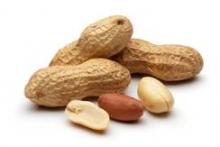ORLANDO – School children with asthma who also have a food allergy have a significantly increased need for controller drugs and hospitalization, compared with similar asthmatic children without a food allergy, based on data collected from 302 U.S. patients.
Food allergies are also "highly prevalent" among U.S. school children with asthma in inner-city neighborhoods, affecting a quarter of the children enrolled in the School Inner City Asthma Study, Dr. James L. Friedlander said at the annual meeting of the American Academy of Allergy, Asthma, and Immunology.
Multiple food allergies produced even more pronounced exacerbations, linking with "a higher risk of more severe asthma morbidity and more resource use," said Dr. Friedlander, an allergy and immunology physician at Children’s Hospital Boston.
The School Inner City Asthma Study enrolled 302 children aged 5-13 from about 20 schools in the northeastern United States. All children had physician-diagnosed asthma, plus at least one of these three markers of significant disease: at least one wheezing episode during the prior 12 months, need for daily preventive medical treatment, or at least one unscheduled visit to a physicians for asthma during the prior 12 months. The average age of the enrolled children was 8, and they divided equally as boys and girls. About a third of the children were black, a third were Hispanic, 5% were white, and the remainder were other racial and ethnic groups. Nearly three quarters came from households with an annual income of less than $45,000, and 80% had a family history of asthma (J. Allergy Clin. Immunol. 2012;129[suppl.]:AB132).
In all, 75 of the children (25%) had a food allergy documented by testing at their entry into the study, and 36 of these children were allergic to more than one food. The most common food allergy was to peanut (43%), followed by tree nut (29%), fruit (25%), shellfish (21%), egg (17%), milk (15%), soy (10%), and fish (10%).
About half of the children also had a diagnosis of eczema. Among the children with a food allergy, symptoms generally appeared within an hour of eating the allergic food. This resulted in urticaria in 60%, mouth or throat itching in 44%, and swelling in 40%. But many of the children also displayed respiratory symptoms as their allergic response to food, with 33% having difficulty breathing, 31% experiencing throat tightening, 29% wheezing, and 28% coughing.
Questionnaire replies from the children’s parents identified several features of exacerbated asthma in the children with food allergies. Among those with a food allergy, 73% used a controller medication, compared with a 58% rate among the children without a food allergy, a statistically significant difference. The food-allergic children had a 63% lifetime rate of having been hospitalized at least once, compared with a 40% rate among the children without a food allergy, a statistically significant difference.
Among the 36 children with two or more food allergies, 78% had a history of hospitalization, and 78% used controller medications. Also among the kids with multiple food allergies, 17% had been hospitalized within the 12 months prior to the survey of their parents, compared with a 7% rate among the children with asthma and no food allergy.
Other statistically significant indications of worse asthma morbidity in the children with multiple food allergies included 42% with at least 3 days of asthma symptoms during the preceding 2 weeks, compared with 22% among the children with no food allergy, and a mean number of 5.8 clinic or emergency department visits during the prior 12 months, compared with an average of 4.1 visits among the children with no food allergies.
Dr. Friedlander said that he had no relevant financial disclosures.


